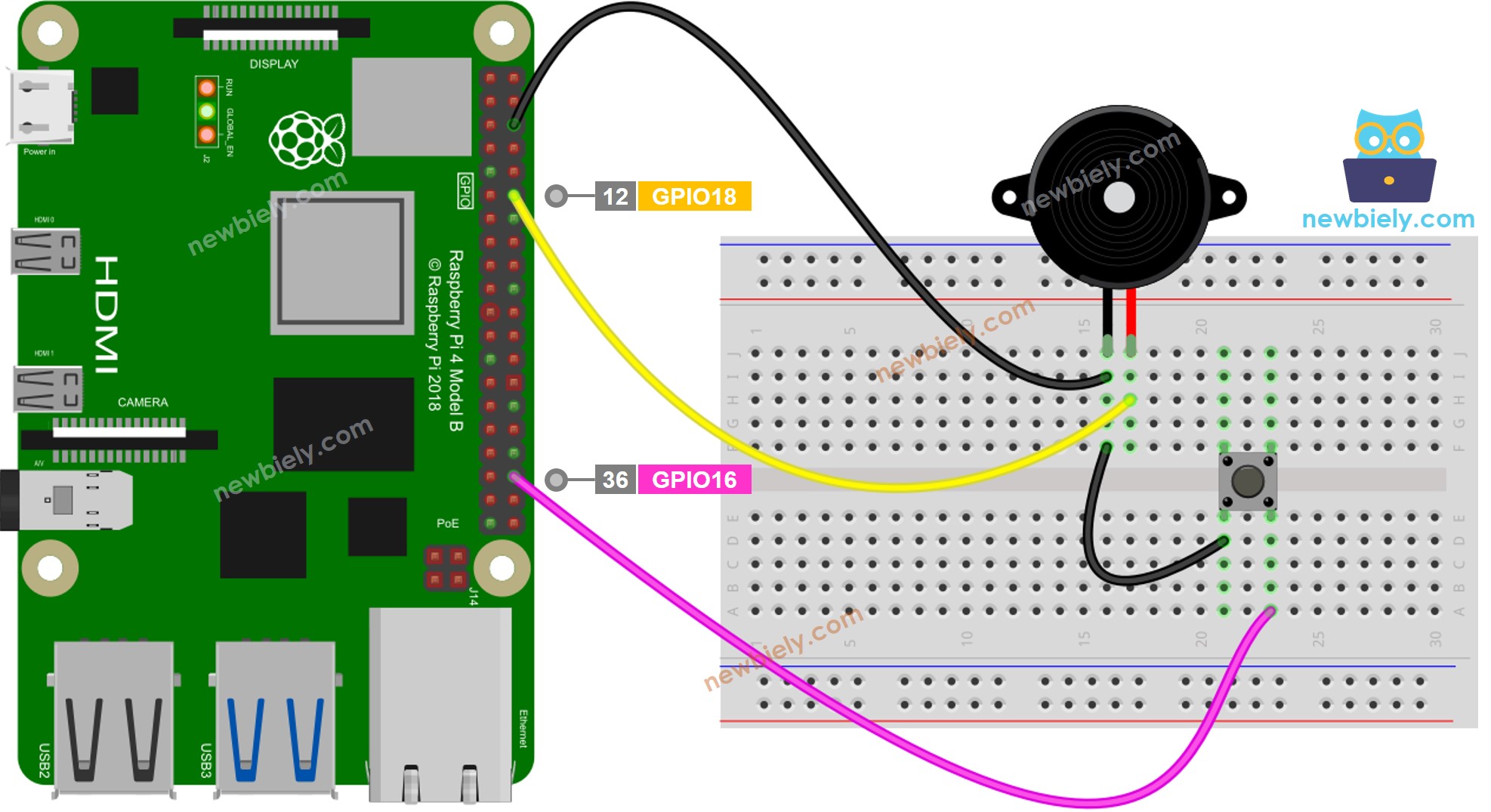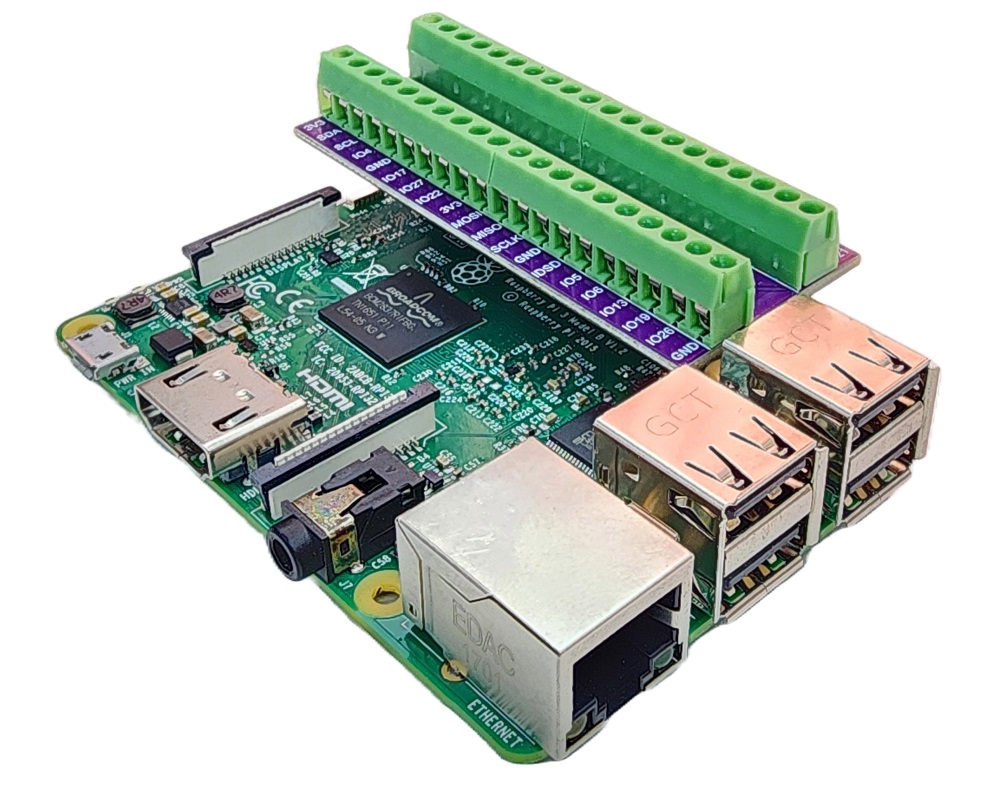Raspberry Pi - Bouton - Buzzer Piézo
Ce tutoriel vous explique comment utiliser un Raspberry Pi et un bouton pour contrôler un buzzer piézoélectrique. Les actions suivantes seront discutées en détail :
- Lorsque le bouton est pressé, le buzzer piézoélectrique produira un son.
- Lorsque le bouton n'est pas pressé, le buzzer piézoélectrique cessera de produire du son.
- Lorsque le bouton est pressé, le buzzer piézoélectrique générera une mélodie.
Préparation du matériel
Ou vous pouvez acheter les kits suivants:
| 1 | × | Kit de Capteurs DIYables (30 capteurs/écrans) | |
| 1 | × | Kit de Capteurs DIYables (18 capteurs/écrans) |
À propos du buzzer piézoélectrique et du bouton
Si vous n'êtes pas familier avec le buzzer piézo et le bouton (y compris le brochage, leur fonctionnement, et comment les programmer), les tutoriels suivants peuvent vous aider :
Diagramme de câblage

Cette image a été créée avec Fritzing. Cliquez pour agrandir l'image.
Pour simplifier et organiser votre montage de câblage, nous recommandons l'utilisation d'un shield à bornier à vis pour Raspberry Pi. Ce shield assure des connexions plus sûres et mieux gérées, comme illustré ci-dessous :

Code Raspberry Pi - Son Simple
Dans cette partie, nous allons apprendre à utiliser un buzzer piézoélectrique pour émettre un son simple lorsque le bouton est pressé en utilisant le Raspberry Pi.
Étapes rapides
- Assurez-vous d'avoir Raspbian ou tout autre système d'exploitation compatible avec Raspberry Pi installé sur votre Pi.
- Assurez-vous que votre Raspberry Pi est connecté au même réseau local que votre PC.
- Assurez-vous que votre Raspberry Pi est connecté à Internet si vous devez installer des bibliothèques.
- Si c'est la première fois que vous utilisez Raspberry Pi, consultez Installation du logiciel - Raspberry Pi.
- Connectez votre PC au Raspberry Pi via SSH en utilisant le client SSH intégré sur Linux et macOS ou PuTTY sur Windows. Consultez comment connecter votre PC au Raspberry Pi via SSH.
- Assurez-vous que vous avez la bibliothèque RPi.GPIO installée. Sinon, installez-la en utilisant la commande suivante :
- Créez un fichier de script Python button_buzzer.py et ajoutez le code suivant :
- Enregistrez le fichier et exécutez le script Python en exécutant la commande suivante dans le terminal :
- Maintenez le bouton enfoncé pendant plusieurs secondes.
- Écoutez le son du buzzer piézo.
Le script s'exécute en boucle infinie jusqu'à ce que vous appuyiez sur Ctrl + C dans le terminal.
Explication du Code
Consultez l'explication ligne par ligne contenue dans les commentaires du code source !
Raspberry Pi joue la mélodie de la chanson
Dans cette partie, nous ferons en sorte que le Raspberry Pi déclenche le buzzer piézoélectrique pour jouer la chanson "Jingle Bells" lorsqu'un bouton est pressé.
Étapes rapides
- Créez un fichier de script Python button_buzzer_Jingle_Bells.py et ajoutez le code suivant :
- Enregistrez le fichier et exécutez le script Python en exécutant la commande suivante dans le terminal :
- Appuyez sur le bouton
- Ensuite, écoutez la mélodie du buzzer piézo.
Explication du code
Consultez l'explication ligne par ligne contenue dans les commentaires du code source !
